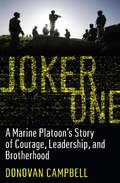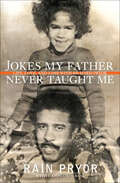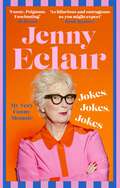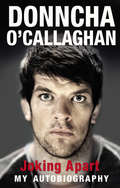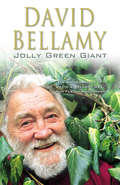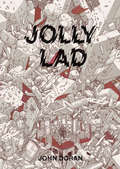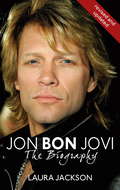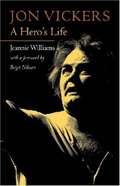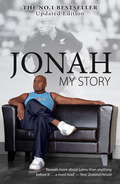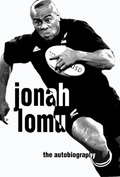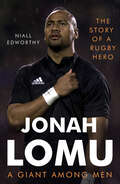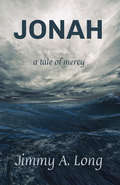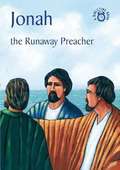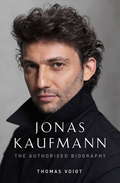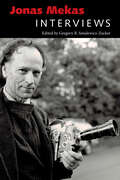- Table View
- List View
Jojo: Finally Home - My Inspirational Memoir - THE SUNDAY TIMES BESTSELLER (2023)
by Johannes Radebe*THE INSTANT SUNDAY TIMES BESTSELLER!*Champion dancer and Strictly Come Dancing professional Johannes Radebe has captured our hearts with his mesmerising talent, bringing joy to millions of fans and wowing the most critical of judges. He is loved not only for his dancing, but for his beautiful, infectious spirit and energy.Jojo: Finally Home is his never-before-told story, where he shares the experiences and challenges he's faced - from growing up in Zamdela, a township in South Africa, as a young boy with a passion for dance (and playing with Barbies), to becoming the star he is today. Dance transformed Jojo's future, giving him a tool to express himself - but as you will learn, this was not always easy.Captivating and moving, these are Jojo's tales of euphoric highs and all-time lows, of making history, of grief, love, family and opportunity. It is a celebration of him finally feeling at home in his own skin. These are the personal moments that have shaped him into the man he is today - someone who lives life to the full and believes that no mountain is insurmountable.
Jojo: Finally Home - My Inspirational Memoir - THE SUNDAY TIMES BESTSELLER (2023)
by Johannes Radebe*THE INSTANT SUNDAY TIMES BESTSELLER!*Champion dancer and Strictly Come Dancing professional Johannes Radebe has captured our hearts with his mesmerising talent, bringing joy to millions of fans and wowing the most critical of judges. He is loved not only for his dancing, but for his beautiful, infectious spirit and energy.Jojo: Finally Home is his never-before-told story, where he shares the experiences and challenges he's faced - from growing up in Zamdela, a township in South Africa, as a young boy with a passion for dance (and playing with Barbies), to becoming the star he is today. Dance transformed Jojo's future, giving him a tool to express himself - but as you will learn, this was not always easy.Captivating and moving, these are Jojo's tales of euphoric highs and all-time lows, of making history, of grief, love, family and opportunity. It is a celebration of him finally feeling at home in his own skin. These are the personal moments that have shaped him into the man he is today - someone who lives life to the full and believes that no mountain is insurmountable.
Joker One: A Marine Platoon's Story of Courage, Leadership, and Brotherhood
by Donovan CampbellAfter graduating from Princeton, Donovan Campbell wanted to give back to his country, engage in the world, and learn to lead. So he joined the service, becoming a commander of a forty-man infantry platoon called Joker One. Campbell had just months to train and transform a ragtag group of brand-new Marines into a first-rate cohesive fighting unit, men who would become his family. They were assigned to Ramadi, the capital of the Sunni-dominated Anbar province that was an explosion just waiting to happen. And when it did happen--with the chilling cries of "Jihad, Jihad, Jihad!" echoing from minaret to minaret--Campbell and company were there to protect the innocent, battle the insurgents, and pick up the pieces. Thrillingly told by the man who led the unit of hard-pressed Marines, Joker One is a gripping tale of a leadership and loyalty.
Jokes My Father Never Taught Me: Life, Love, and Loss with Richard Pryor
by Cathy Crimmins Rain PryorThe loving, witty, yet brutally honest memoir of the daughter of comedy legend Richard Pryor.Rain Pryor was born in the idealistic, free-love 1960s. Her mother was a Jewish go-go dancer who wanted a tribe of rainbow children. Rain’s father was Richard Pryor, perhaps the most compelling and brilliant comedian of his era, a man whose self-destructiveness was as legendary as his groundbreaking comedy.Jokes My Father Never Taught Me is an intimate, harrowing, poignant, and often hilarious memoir that explores the divided heritage and the forces that shaped a wildly schizophrenic childhood. It is the story of a girl who grew up adoring her father even as she feared him—and feared for him, as his drug problems got worse. Both lovingly told and painfully frank, it is an unprecedented look at the life of a comedy icon, told by a daughter who both understood the genius and knew the tortured man within.Praise for Jokes My Father Never Taught Me“Rain Pryor pulls no punches . . . Using the same profanity-laced wit her father perfected, she unspools darkly comic stories . . . but never devolves into self-pity or bitterness.” —Entertainment Weekly“Vital, entertaining and appalling, Pryor has fleshed out a familiar dysfunctional family refrain—”It was a lot easier to love him if you didn’t know him”—with bravery and wit.” —Publishers Weekly
Jokes, Jokes, Jokes: My Very Funny Memoir
by Jenny Eclair'As hilarious and outrageous as you might expect' Rosie Ramsey 'Funny. Poignant. Fascinating. Just the sort of hilarious, disrespectful, ribald book I love to get stuck into' Jo Brand How did little Jenny Hargreaves become Jenny Eclair and elbow her way into the male dominated world of 1980s stand-up?Daughter of Major Derek Hargreaves (spy?) and June Hargreaves (spy's wife?) sister of Sara (born to be Head Girl) and Ben (the usurper), Jenny's comedy career took off via drama school, cider, sausage rolls, sleeping with men who looked like they lived under a carpet, punk poetry, anorexia, bedsit misery, waitressing and not really having a clue about anything.This was a world before microphones, mobile phones, before everyone gave up smoking or started taking coke. Jenny Eclair was on the comedy circuit before there really was a comedy circuit and was the first woman to win the Perrier Award along the way.Still gigging to sell-out crowds forty years later, Jenny Eclair's memoir charts her childhood, her career and the changing face of women in comedy, all told with hilarious brilliance in Jokes, Jokes, Jokes, her very funny memoir.
Jokes, Jokes, Jokes: My Very Funny Memoir
by Jenny Eclair'As hilarious and outrageous as you might expect' Rosie Ramsey 'Funny. Poignant. Fascinating. Just the sort of hilarious, disrespectful, ribald book I love to get stuck into' Jo Brand How did little Jenny Hargreaves become Jenny Eclair and elbow her way into the male dominated world of 1980s stand-up?Daughter of Major Derek Hargreaves (spy?) and June Hargreaves (spy's wife?) sister of Sara (born to be Head Girl) and Ben (the usurper), Jenny's comedy career took off via drama school, cider, sausage rolls, sleeping with men who looked like they lived under a carpet, punk poetry, anorexia, bedsit misery, waitressing and not really having a clue about anything.This was a world before microphones, mobile phones, before everyone gave up smoking or started taking coke. Jenny Eclair was on the comedy circuit before there really was a comedy circuit and was the first woman to win the Perrier Award along the way.Still gigging to sell-out crowds forty years later, Jenny Eclair's memoir charts her childhood, her career and the changing face of women in comedy, all told with hilarious brilliance in Jokes, Jokes, Jokes, her very funny memoir.
Joking Apart: My Autobiography
by Donncha O'CallaghanDonncha O'Callaghan is one of Ireland's leading international rugby players, and a stalwart of the Munster side. He was a key figure in the Irish team which won the IRB 6 Nations Grand Slam in 2009, and has won two Heineken Cup medals and two Magners League titles with Munster. But that success did not come easy. For such a well known player with a larger-than-life reputation, his long battle to make a breakthrough at the highest level is largely unknown. In this honest and revealing autobiography, Donncha talks in detail about the personal setbacks and disappointments at Munster and the unconventional ways he dealt with the frustration of not making the team for four of five years in his early 20s.He had a parallel experience with Ireland where it took him nearly six years to get from fringe squad member to established first choice player. Here he talks candidly about how he brought discipline to his game, and about his relationships with the coaches who had overlooked him and the second row rivals who had kept him on the bench.Donncha talks also with great warmth about a hectic childhood that was shaped by the death of his father when he was only six years old. One of the heroes of his story is his mother Marie who showed incredible strength and resourcefulness to rear a family of five on her own.Often deservedly regarded as 'the joker in the pack', what is often less well known is the serious attitude and intensely professional approach Donncha brings to his rugby. Joking Apart gives the full picture, showing sides of the man that will be unfamiliar to followers of Irish rugby and will surprise the reader.
Jolly Green Giant
by David BellamyDavid Bellamy is a natural story teller whose memoir will be packed full of funny anecdotes and observations. It is the story of how a city boy, brought up in the middle of London, went for a trip into the countryside one day, an event which was to transform his life by setting in motion the amazing love of nature which would make famous this larger-than-life character. In his infectious style he illumines on, amongst other things, the fact that his father, the manager of a branch of Boots, had to grease his hair straight - because in those days managers of Boots weren't allowed to have curly hair! Then there was the time he and his brother discovered an exploded bomb, kept in the garden shed - and then accidentally blew off the front of the house with it. He reveals his secret passion is ballet dancing - and how his mother only found out about it when she saw him on stage at the Fairfield Hall in Croydon. His career as an academic, then author, broadcaster, consultant and television personality, spans 35 years and his main passion - campaigning for the environment - have led to many adventures including his being twice imprisoned in the Third World.
Jolly Lad (Strange Attractor Press Ser.)
by John DoranA memoir about the recovery from alcoholism, habitual drug use and mental illness, from broadcaster, and co-founder and editor of The Quietus website, John Doran.Jolly Lad is a memoir about the recovery from alcoholism, habitual drug use and mental illness. It is also about the healing power of music, how memory defines us, the redemption offered by fatherhood and what it means to be working class.&“This is not a 'my drink and drug hell' kind of book for several reasons—the main one being that I had, for the most part, had a really good time drinking. True, a handful of pretty appalling things have happened to me and some people that I know or used to know over the years. But I have, for the most part, left them out of this book as they are not illuminating, not edifying and in some cases concern other people who aren't here to consent to their appearance. Instead this book concentrates on what you face after the drink and the drugs have gone.&”Jolly Lad is about gentrification; being diagnosed bipolar; attending Alcoholics Anonymous; living in a block of flats on a housing estate in London; the psychological damage done by psychedelic drugs; depression; DJing; factory work; friendship; growing old; hallucinations; street violence and obsessive behaviour—especially regarding music and art.
Jolson: The Legend Comes to Life
by Herbert G. GoldmanThey call him "The Immortal Jolson"--the dynamic king of Broadway. Audiences knew him for four decades as The World's Greatest Entertainer. Now Herbert G. Goldman gives us the definitive biography of this quintessential star of the musical stage. With a sure eye for the revealing anecdote, Goldman chronicles each step of Al Jolson's colorful life: his early struggles with his brother, Harry, on the vaudeville and burlesque circuit; his rise to stardom on Broadway, which prompted a Variety writer to proclaim, "The Shuberts may run the Winter Garden, but Al Jolson owns it;" his glory at the pinnacle of national fame, which came with his appearances in the movies The Jazz Singer (the first "talking picture") and The Singing Fool; his subsequent decline and brief resurgence after the film biography "The Jolson Story" was released in 1946; and his final round of appearances in 1950, entertaining American troops in Korea just before his death.
Jon Bon Jovi: The Biography
by Laura JacksonThis fascinating biography provides a detailed portrait of the high-energy, charismatic international superstar and frontman of the ever-popular band, Bon Jovi. The book charts Jon's relationship with the other band members who have their fair share of rock and roll stories - sex, booze, burnouts, health and women problems. Although rock music is Jon Bon Jovi's first love, he has more recently developed an interest in acting - starring in various hit TV shows such as Ally McBeal and Sex and the City and attracting critical acclaim for his role in World War II hit film, U-571. He has also scored film music, with his score for Young Guns earning him an Oscar nomination. Bestselling writer Laura Jackson explores the personality, character, drive and the determination that have taken him from playing New Jersey clubs through all the groupie excess and glamorous indulgence to where the band is today. Two new chapters in this updated edition detail his recent work for charity, his involvement in politics and football and also give an update on the band's new albums and tours.
Jon Bon Jovi: The Biography
by Laura JacksonThis fascinating biography provides a detailed portrait of the high-energy, charismatic international superstar and frontman of the ever-popular band, Bon Jovi. The book charts Jon's relationship with the other band members who have their fair share of rock and roll stories - sex, booze, burnouts, health and women problems. Although rock music is Jon Bon Jovi's first love, he has more recently developed an interest in acting - starring in various hit TV shows such as Ally McBeal and Sex and the City and attracting critical acclaim for his role in World War II hit film, U-571. He has also scored film music, with his score for Young Guns earning him an Oscar nomination. Bestselling writer Laura Jackson explores the personality, character, drive and the determination that have taken him from playing New Jersey clubs through all the groupie excess and glamorous indulgence to where the band is today. Two new chapters in this updated edition detail his recent work for charity, his involvement in politics and football and also give an update on the band's new albums and tours.
Jon Vickers: A Hero's Life
by Jeannie WilliamsWith foreword by by Birgit Nilsson. During his extraordinary career, the now-legendary Canadian tenor Jon Vickers sang the most demanding of operatic roles -- Tristan, Peter Grimes, Otello, Aeneas, Parsifal -- with searing emotional intensity and dramatic interpretation. In this first biography of Vickers, Jeannie Williams provides a captivating and revealing portrait of a very private, deeply religious man and complex artist who baffled and often enraged his friends and colleagues. Drawing on scores of interviews with those who knew and worked with Vickers, Williams traces his life from boyhood in western Canada, to schooling in Toronto, to his debut at Covent Garden, to his tenure at the Royal Opera House, to his celebrated appearances on the world's major opera stages. She discusses his signature roles, including details of a little-known Otello in South Africa, over-the-edge performances, and stormy battles with conductors and directors. In addition, she details Vickers' controversial withdrawal from the Tannhuser opera, his on-going friction with BBC-TV, his conflicted relationship with his native Canada, and his choices in repertory. Williams also illuminates the paradoxes in the world view of a man who might have been a preacher or a prime minister if he had not been blessed with such a remarkable musical talent. This in-depth, well-balanced, and objective biography will stand as the definitive work on one of the world's greatest heroic tenors.
Jonah - My Story: My Story
by Warren Adler Jonah LomuHe was rugby?s first truly international celebrity and he remains one of the game?s greatest heroes. A decade after the publication of his blockbuster autobiography, Jonah Lomu opens up like never before about life after the All Blacks. In this deeply moving, sometimes explosive update to Jonah: My Story, the big man talks candidly of his life and his loves, of reconciliation and betrayal, and of the tragic illness that has been the one constant in his life since he first thundered on to the world?s sporting stage. It?s 10 years since he played his final match for the All Blacks, but still Jonah Lomu remains the most recognisable rugby face on the planet. In this much awaited update to his 2004 best-selling biography, Jonah talks about the highs and lows of that last decade with candour and honesty. Packed with astonishing revelations, including the split with his long-time manager, the breakdown of his marriage and the deeply moving reconciliation with his father, Jonah is also open about his on-going health problems. He details his brave battle with nephrotic syndrome, which eventually led to a kidney transplant and talks about his current health situation, which sees him again in complete renal failure and requiring a second transplant. Despite the cruel hand Jonah Lomu has been dealt, he remains cheery and optimistic, sharing the good times along with the bad ? including his joy at becoming a father and how his two young sons have helped save him from the `dark times?.
Jonah Lomu Autobiography
by Jonah LomuWhen Jonah Lomu trampled over Tony Underwood in the World Cup semi-final in 1995, the greatest star rugby union has ever seen was launched on the world. His size and pace seemed to make him unstoppable - and he was still just 20, having only recently learned to play on the wing. How much better would he get? But a year later, a rare and serious kidney disorder threatened more than his career. He fought back, and continued to score tries at a remarkable rate.Lomu's astonishing story is not just about tries, but about adapting to becoming rugby's first superstar of the professional era, a life lived in the spotlight. This is an extraordinary tale from an extraordinary man.
Jonah Lomu Autobiography
by Jonah LomuWhen Jonah Lomu trampled over Tony Underwood in the World Cup semi-final in 1995, the greatest star rugby union has ever seen was launched on the world. His size and pace seemed to make him unstoppable - and he was still just 20, having only recently learned to play on the wing. How much better would he get? But a year later, a rare and serious kidney disorder threatened more than his career. He fought back, and continued to score tries at a remarkable rate.Lomu's astonishing story is not just about tries, but about adapting to becoming rugby's first superstar of the professional era, a life lived in the spotlight. This is an extraordinary tale from an extraordinary man.
Jonah Lomu, A Giant Among Men: The Story of a Rugby Hero
by Niall EdworthyA concise biography of Jonah Lomu, the international icon who changed rugbyJonah Lomu, A Giant Among Men profiles New Zealand’s greatest sportsman, and one of the finest players in the history of rugby. His combination of pace and power was unprecedented, enthralling fans from around the world. Lomu burst onto the international scene in 1994, joining the All Blacks as their youngest-ever member. With a string of exceptional performances he came to dominate the Rugby World Cup the following year. His ebullient personality, frightening athleticism and passionate pride in wearing the shirt captured the public imagination, and made Lomu the game’s first truly global superstar.His tragic death in November 2015, aged just 40, left the rugby community in shock. This biography pays tribute to a life cut short, but one marked by such achievement and impact that it will never be forgotten.
Jonah: A Tale of Mercy
by Jimmy A. LongThe story of Jonah is ancient and often told, but even so, most remember it only as the tale of a prophet eaten by a fish. In Jonah: A Story of Mercy, author Jimmy A. Long presents the biblical story of Jonah with historical details of the time while weaving fictional characters and events that present the prophet as a real man fighting the call of God on his life. Beginning prior to his call to Nineveh, we follow Jonah as he runs from God, reluctantly obeys God, and is amazed and even angered at the mercy of God. In the process, we learn as much about ourselves as we do the prophet.
Jonah: The Runaway Preacher
by Carine MackenzieThe story of Jonah is accurately retold from the Bible (From the book of Jonah). The Bibletime series by Carine Mackenzie have been praised for their accurate retelling of great bible stories. This timeless collection has been printed in many languages throughout the world and sold in their millions. They can be read over and over again.
Jonas Brothers: Your Unofficial Guide to the Iconic Pop Siblings (Idols of Pop)
by Malcolm MackenzieBook two in the Idols of Pop series, Idols of Pop: The Jonas Brothers, is an essential fan-focused guide to the latest and greatest icons in pop music: the Jonas Brothers! This 64-page book features full-color candid and professional photos with the Jonas Brothers front and center. Packed with personal takes on life, love, music and more, Idols of Pop: Jonas Brothers is your guide to one of the hottest pop groups in the world today.
Jonas Kaufmann: In Conversation With
by Thomas Voigt'The most sought-after tenor in the world', the greatest tenor of today', 'the new king of tenors' - for years Jonas Kaufmann has occupied a unique status among the world's greatest opera singers.Thomas Voigt's revealing biography, written in collaboration with Kaufmann, reflects on the singer's artistic development in recent years; his work in the recording studio; his relationship to Verdi and Wagner; and much more. The book includes contributions from Plácido Domingo, Anja Harteros, Antonio Pappano, Helmut Deutsch and Jürgen Kesting, as well as many striking photographs.Kaufmann was born in Munich in 1969. Soon after training at the University of Music and Performing Arts he was invited to make his debut in theatres such as the Stuttgart Opera and Hamburg State Opera, as well as international appearances at the Lyric Opera of Chicago, the Paris Opera and La Scala in Milan. He made his Salzburg Festival debut in 1999 in a new production of Busoni's Doktor Faust. He performed the role of Don José in Bizet's Carmen at Covent Garden in 2006 and made his acclaimed debut as Alfredo in Verdi's La Traviata at the Metropolitan Opera alongside Angela Gheorghiu. He has sung leading tenor roles in the operas of Richard Wagner with success in Germany and abroad, and is also a highly accomplished Lieder singer. In 2015 Kaufmann became the first German to perform the British seafaring anthem 'Rule, Britannia!' at the Last Night of the Proms.No wonder that the New York Times has described Jonas Kaufmann as 'a box-office draw, and ... the most important versatile tenor of his generation'.
Jonas Kaufmann: In Conversation With
by Thomas VoigtJonas Kaufmann is a phenomenon. With his musicality, his vocal technique and his expressive powers - to say nothing of his matinée-idol good looks - he is widely regarded as the greatest tenor of today. Thomas Voigt's intimate biography, written in collaboration with Kaufmann, reflects on the singer's artistic development in recent years; his work in the recording studio; his relationship to Verdi and Wagner; the sacrifices of success; and much more. It gives unparalleled insight into the world of one of the most captivating opera singers of the international stage.
Jonas Mekas: Interviews (Conversations with Filmmakers Series)
by Gregory R. Smulewicz-ZuckerA refugee from post–World War II Europe who immigrated to the US in 1949, Jonas Mekas (1922–2019) became one of America's foremost champions of independent cinema and one of its most innovative filmmakers. An admired poet in his native Lithuania, Mekas began recording his life on film shortly after his arrival in New York. Through his work as the author of the Village Voice’s “Movie Journal” column, editor of Film Culture magazine, and founder of Anthology Film Archives and the Film-Makers’ Cooperative, Mekas played a vital role in the promotion of avant-garde and independent films. His early films, Guns of the Trees and The Brig, challenged the structure of traditional narrative filmmaking. He is best known for his “diary films,” including Walden (Diaries, Notes, and Sketches); Reminiscences of a Journey to Lithuania; and As I Was Moving Ahead Occasionally I Saw Brief Glimpses of Beauty. His films, writings, and the institutions he built have influenced generations of filmmakers, poets, artists, musicians, critics, and scholars. In Jonas Mekas: Interviews, volume editor Gregory R. Smulewicz-Zucker collects eighteen interviews covering almost sixty years of the filmmaker’s career. Mekas discusses his remarkable life as a refugee from Nazi- and Soviet-occupied Lithuania, his role as one of the major figures in the development of the American avant-garde, and his thoughts about his own work. In conversation with scholars, journalists, and other prominent artists, Mekas speaks of his passion for artistic expression and uncompromising vision for a liberated cinema. These interviews preserve Mekas’s voice so that it might speak to future generations of artists and intellectuals.

